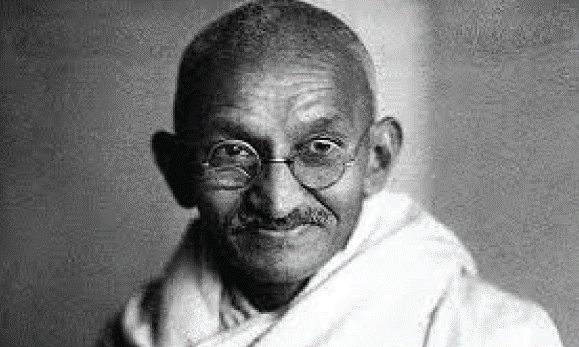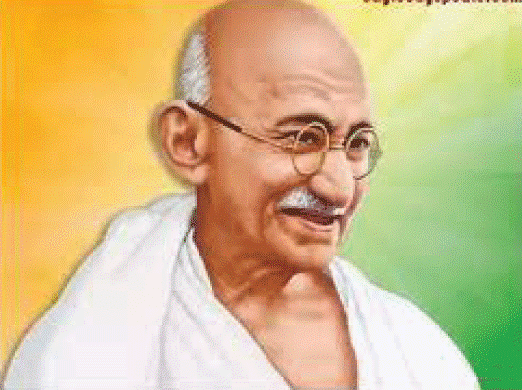Mahatma Gandhi: Biography, About, History
Introduction
Mohandas Karamchand Gandhi, popularly referred to as Gandhiji, was born in Porbandar, a city situated in the Indian state of Gujrat. His parents were Mr Karamchand Gandhi and Mrs Putli bai. His father was a government officer in the British era. He was a Diwan in the British Government.
Gandhiji was the youngest among his siblings. He always told that his mother was his inspiration. He adopted the character of simplicity from his mother. All of his family members were followers of Jainism, due to which Gandhi Ji strictly believed in the principles of truth and non-violence, and during his whole life, he always followed these rules.

Education Of Gandhiji
During his childhood, Gandhiji's family lived in Porbandar, and thus he completed his early education from Porbandar. After completing his initial studies, his family moved to Rajkot because his father got a transfer from Porbandar to Rajkot. In 1887 he completed his class 10th from Rajkot. After that, he went to Bhavnagar to continue his further studies. But he could not manage his health there and moved back to Rajkot. In 1888, he went to England to complete his graduation. From there, he completed his study in law and became a barrister.
Personal Life of Gandhiji
During those times, child marriage was prevalent in many parts of India. Due to this practice, children were married at an early age. And therefore, Gandhiji was also married at the age of thirteen. He was married to Mrs Kasturba Bai, the daughter of a rich businessman. Kasturba’s father never allowed her to study. But after getting married to Mr Gandhi, Gandhiji taught him to study. And he always trusted her with all kinds of confidential information. In 1885, Gandhi Ji and Kasturba were blessed with their first child, but he died very soon due to birth-related complications.
Gandhi Ji in Africa

In 1883 Gandhiji went to Africa, where he faced discrimination between black and white people by the white government in South Africa. There is a famous story related to the discrimination faced by Gandhiji.
According to the story, one day, he had to go somewhere by train, and for this trip, he took a ticket for the first-class seat. Still, when he tried to enter that first-class seat, white people told him that he could not seat in a first-class seat because he was not white. He requested these people and told them that he had the ticket to sit in the first-class cabin of the train. Still, after an intense argument, people threw him out of the train.
After facing such discrimination, he decided that he would do something for those who had to feel ashamed because of their colour. He organised many protests to highlight the problems faced by people of colour in South Africa. In 1915, he returned to India.
Gandhiji in the Indian Independence Movement
The greatest achievement of Gandhi's life was his participation and active role in India's movement for independence from British Rule. In the following section, the activities of Gandhiji during the Indian freedom struggle are discussed in detail.
Champaran and Kheda Movement
In 1915, Gandhi came back to India from South Africa. At that time, the peasants in the area of Champaran were struggling due to the strict policies of the British Administration. Under these policies, farmers were allowed to sow only the crops given to them by the English government. Such a harsh policy meant that the peasants would not be the real owner of their fields because they were not allowed to sow a crop of their choice.
When Gandhiji heard this news, he decided to protest against such a rule. Even then, Gandhiji organised a large scale strike against this rule in Champaran. In this strike, a lot of people came in support of Gandhi. Still, the major problem was Gandhi's belief in non-violence, and it was very difficult to raise your demands in front of the British government without using violence.
When the British government saw that the conditions of Champaran were going out of their hand, then they decided to arrest Gandhi with many other local farmers and leaders. After this strike, Sardar Patel went to the British governor and asked him for a compromise on the Champaran issue. From there, they both decided that they would remove this rule. The Champaran movement proved to be very successful, and Gandhi secured a lot of fame all over India. As a result, Gandhiji had now emerged as a national leader for the common people.
Indian National Congress
In 1921, Gandhiji was elected as the president of the Indian National Congress. After joining the Indian National Congress, Gandhiji added a word to the objectives of the Indian national congress. The word was "Swaraj ”, meaning self-rule. Gandhi also made many changes in the working of the Indian National Congress. Now every Indian can join this committee, and its main motto was to attain the freedom of India.
Gandhiji during the Non-Cooperation Movement
Gandhi started several campaigns to promote the growth of Indian artisans and business people. He started to promote the use of Indian products and boycotted British goods and services. When these campaigns became popular, then many Indians started the use of Indian products as they destroyed a lot of clothes and other products imported from other countries, especially Britain.
Gandhiji also requested all Indians to leave their government jobs because anyone working for the government institutions supported British rule in India. After this request, many Indians left their job, and they started to participate in India's struggle for freedom. Also, people started to wear Indian clothes, which were famous as Khadi.
Gandhi told everyone that all people had to come together to uproot the Britsh Rule from India. He requested the rich people to help in the freedom struggle with money and asked poor people for the workforce.
On 10th March 1922, Gandhi was found guilty in the case of Rajdroh. After the British government arrested him, they announced that Gandhi had to serve in jail for six years. But after a few months, the government had to release him due to his health issues.
Namak Satyagrah
At that time, there were a lot of rules by which Indians were forced to pay different kinds of unnecessary taxes on many daily use products. People were forced to pay taxes on necessary household items like salt and oil. Such a strict tax regime badly impacted the middle-class and poor people. Then, Mr Gandhi launched the Namak satyagraha to protest against the tax levied by the British government of salt and publicly violated this law by making salt on the seashore of Dandi in Gujarat. Finally, the government bent for the demands of the common people and abolished the taxes on salt.
Freedom and Partition of India
Every Indian will always remember the year 1947. This year, India had to face two major events. The first event brought a lot of happiness for Indians with the freedom from British Rule. The second event brought a lot of problems for the Indian people in the form of partitioning India into two separate countries of India and Pakistan.
On one side, Indians celebrated freedom, and on the other side, many Indians had to leave their country because of partition. Gandhiji played an important role in both of these historic events. If we will discuss the freedom of India, then Gandhiji was amongst the leading heroes of India's freedom. He was a role model for many freedom fighters.
He inspired millions of Indian people and transformed them into freedom fighters. Because of his participation, many Indians felt that they could get freedom from the British empire.
Thoughts of the people on Gandhi
Nowadays, our youth has different thoughts about Mr Gandhi. During the partition of India, Patel and many other leaders wanted all Muslims to leave India and move to Pakistan. Still, Mr Gandhi decided that you don't need to leave India if you are a Muslim. People of all religions are welcome to live in India.